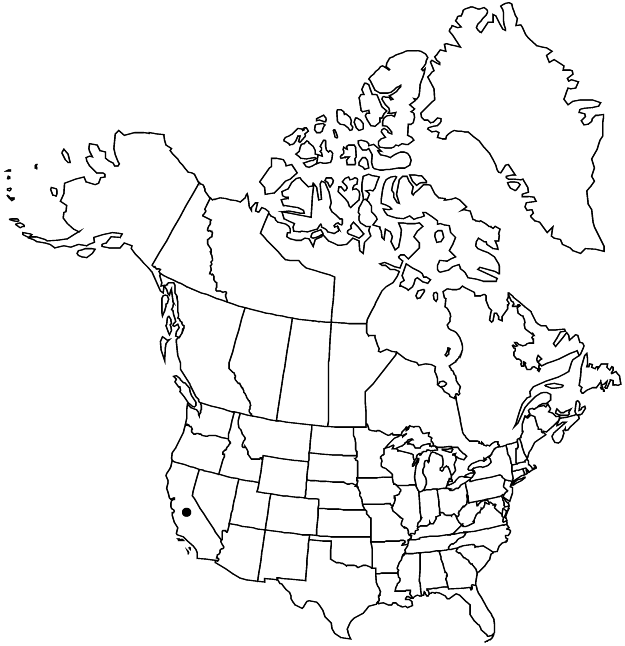Eriogonum apiculatum
Proc. Amer. Acad. Arts 17: 378. 1882.
Herbs, erect to spreading, annual, 2–9 dm, glabrous and sparsely glandular especially (or at least) near nodes, grayish to greenish. Stems: caudex absent; aerial flowering stems erect, solid, not fistulose, 0.5–1.5 dm, glabrous, glandular distally or sparsely so throughout. Leaves basal; petiole 1–4 cm, pilose, slightly winged; blade oblanceolate to obovate, (0.5–)1–4 × 0.5–1.5 cm, sparsely pilose, glandular and greenish on both surfaces, margins entire. Inflorescences cymose, open, 30–80 × 10–50 cm; branches not fistulose, glabrous, sparsely glandular at nodes; bracts 3, scalelike, 1–2 × 1–2 mm. Peduncles deflexed, straight, filiform, (0.1–)0.2–0.35 cm, sparsely glandular. Involucres turbinate, 1.2–1.5 × 1–1.3 mm, glabrous; teeth 4, erect or nearly so, 0.3–0.7 mm. Flowers 1.5–2.5 mm; perianth white with reddish brown midribs, becoming reddish in fruit, rarely yellow, puberulent; tepals monomorphic, oblong-obovate, sometimes with apiculate tip 1–2 mm; stamens exserted, 1.5–2 mm; filaments glabrous. Achenes light brown to brown, lenticular, 1.3–1.7(–2.2) mm, glabrous. 2n = 40.
Phenology: Flowering May–Nov.
Habitat: Sandy granitic flats and slopes, chaparral communities, oak and conifer woodlands
Elevation: (200-)700-2700 m
Discussion
Eriogonum apiculatum is restricted to the San Jacinto, Santa Rosa, Palomar, and Cuyamaca mountains of Riverside and San Diego counties. Two collections are discounted as to location: Hall 1025 (MIN), purportedly from the San Bernardino Mountains, certainly was labeled erroneously by the Parish brothers, who redistributed the sheet; and Jaeger s.n. (19 May 1940, DS, IDS, UTC, WTU) from “Falcon Flat” in the Little San Bernardino Mountains appears to be another of the small but significant list of Jaeger specimens with highly dubious label data. No such place is known in Joshua Tree National Park. The phase of the species named var. subvirgatum, with nearly sessile involucres, occurs intermixed with the typical expression.
A yellow-flowered population was found at the eastern end of the San Bernardino Mountains, San Bernardino County. Recent attempts to relocate those plants have been unsuccessful, and they remain undescribed.
Selected References
None.
